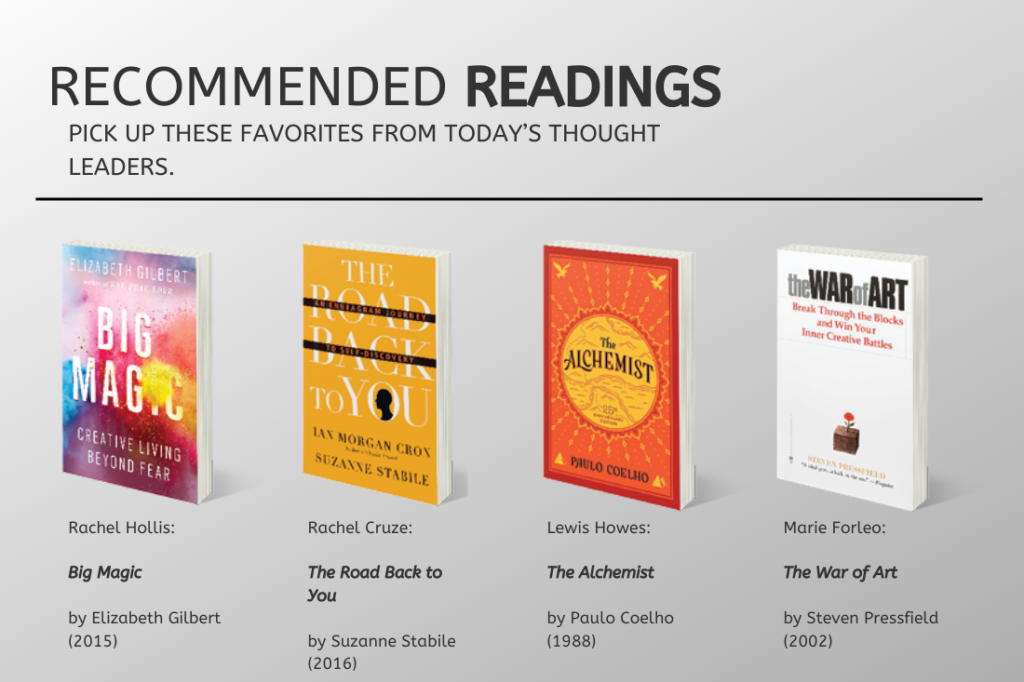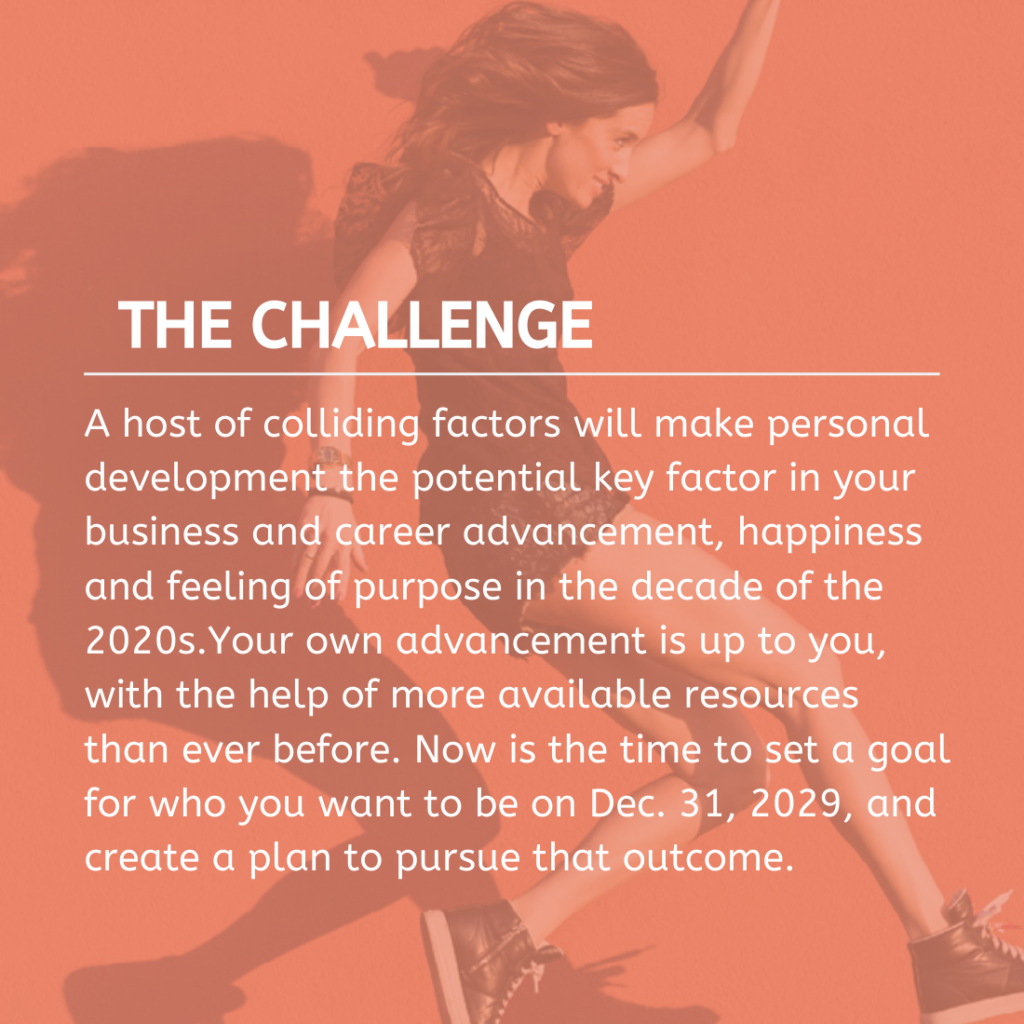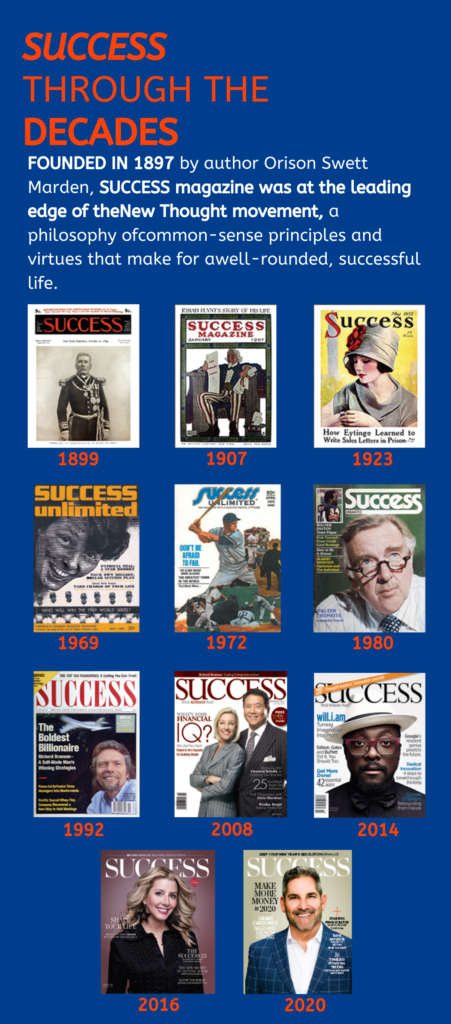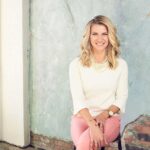The term “intuitive eating” has seen a recent surge in popularity, but it was coined back in 1995, and its roots date back to the early ’70s. The idea is that fad diets, cleanses and fasts aren’t the answer and that, instead, the answer is and always has been within you. The thinking goes that by rebuilding trust with your body and differentiating between physical and emotional hunger, you can relearn how to eat when you’re hungry, drink when you’re thirsty and avoid cravings.
It sounds simple enough, but for many people, the emotional relationship with food is a deep-seated and complex one. There isn’t a simple answer, but there are tools that can help you break the emotional ties and rebuild healthy ones in their place. It will take consistency, determination and time—maybe even the rest of your life.
Sound familiar?
Personal development has been called many things. It’s been called too prescriptive, too woo-woo, too vague, too cultish. It’s seen the rise and fall of thousands of motivational speakers, authors, so-called experts and coaches. It’s seen negative press and enough bad players touting now-debunked claims that, for a while, society at large had a pretty bad taste in its mouth. Yet it persisted. Why?
At its core, personal development is about changing your mindset in order to improve aspects of your emotional, physical, mental and spiritual state. That is, if you sincerely believe that you possess the power to change one or many things about your life, there are tools to get you there.
Of course, you must account for the fact that true and lasting change is never going to come from a quick fix. It will require consistency, determination and time—definitely the rest of your life.
Much like intuitive eating, personal development has seen a resurgence in mainstream popularity. In fact, the estimated $10 billion industry is expected to grow another $3 billion to $5 billion in the next four years according to the 2019 U.S. Market for Self Improvement Products and Services Report. Why?
First, the continued growth of social media means unparalleled access to 7.4 billion people. Those 7.4 billion people have access to seemingly endless amounts of content. Something has to resonate.
Second, it’s necessary. Younger generations are reporting unheard-of levels of stress, anxiety and depression—most of which come from a society that promotes busyness and overwork. They want control. They want answers.
Third, access and need breed popularity, which breeds normalcy, which breeds acceptance, which breeds celebration of self-care. The “I did it!” Instagram posts, only increase awareness, access and popularity, snowballing the cycle.
Finally, perhaps for the first time, personal development is truly big enough to be personal. Interest has shifted from the messenger to the message itself. A mindset of “take what you want and leave the rest” reigns supreme.
The result of it all is a clear ultimatum: Work to grow and improve yourself and your skills now and in the years to come, or be left behind by others, stalled out and static.
The State of Personal Development
Watch this documentary introduction to The New Thought Leaders who can help you reach your potential.
Factor 1 / ACCESS
According to the most recent numbers released by Pew Research, 72 percent of U.S. adults are active on at least one social media platform. Most people don’t need to see that number to know it’s true. Many of us can’t or won’t be without our phones for more than an hour. Whether mindlessly scrolling or engaging with social media, it, like any great technological advancement, has the power to harm or heal.
“The changes in technology present both fresh opportunities to impact people’s lives and an ever-growing demand to be discerning with how you spend your time and energy,” personal development author and speaker Marie Forleo says.
There are more than 4.5 million Instagram posts labeled #personaldevelopment. The potential reach for one single video recorded on a smartphone is virtually boundless.
“Ultimately, [accessibility] is a good thing,” Forleo says. “People have the opportunity to unleash their creativity and connect with others. More people means a higher variety of approaches, perspectives, and styles of teachers to choose from.”
But with this access comes a responsibility on both creator and consumer. The consumer is tasked with sifting through thousands of posts that promise life-changing results and discerning the helpful from the innocuous from the harmful.
Regardless of the filtered highlight reels that can be detrimental, social media has become an invaluable tool for personal development. Deeply vulnerable videos, lighthearted yet painfully relatable memes and cartoon drawings of personal experiences all provide a mirror with which one person can see themselves reflected and thereby soothe feelings of aloneness. In turn, users get a vote (with their product dollars, likes, saves and shares) on which platforms will grow. This is crucial for historically underrepresented groups.

“The community gets to decide what’s being heard,” says storyteller and host of the On Purpose podcast Jay Shetty. “People are now going to be able to see people who look like them, sound like them, who have had the same pain as them, who want the same success as them. They’re going to see that reflected in the industry.”
In small ways, the community is already bringing about change. Updated Facebook algorithms prioritize personal above business posts. Instagram began eliminating the likes counter for each post in an effort to combat comparison, which has proven negative emotional effects on the user. And Pinterest recently rolled out self-help assistance exercises in partnership with The Stanford Lab for Mental Health Innovation, Vibrant Emotional Health and the National Suicide Prevention Hotline. These include exercises in breathing and mindset shifts, for example.
Factor 2 / NEED
Millennials—perhaps you’ve heard of them—matured amid chaos. Now the largest living demographic, they’ve seen political divisiveness on nearly every big issue, increasing debt burdens and long-term economic instability. All of the above play a role in the state of millennial mental health in 2020, which is to say not good.
A recent survey conducted by Mind Share Partners, Qualtrics and SAP found that half of U.S. millennials have quit a job for mental health reasons. This falls in line with a study released by the American Psychological Association, which found that 53 percent of millennials have lost sleep due to stress, and 76 percent of respondents said that work is their largest source of stress.
“The world is waking up,” says Gabrielle Bernstein, a New York Times best-selling author and speaker. “People are uncomfortable in the chaos that they’re feeling. It’s like a pressure cooker we’re living in. People are seeking solutions rather than problems.”
Millennials aren’t afraid to ask for help. In fact, younger generations are more inclined to seek professional mental care and to talk about it publicly than any prior generation. But what about the more nebulous but just as deadly forms of persistent stress? Ongoing stress can affect everything from the endocrine, cardiovascular and nervous systems.
The current workplace culture in America rewards overwork and busyness, and condemns rest and play. This culture begins in early education, combated by organizations such as The Childplay Institute, which works to increase learning through play in schools. It’s exacerbated in college, prompting anti-college movements such as Outer Coast, which is working to overhaul the current definition of higher education. It’s only natural that the culture flows into the workplace, resulting in The Nap Ministry, which works to use rest and recharge as a form of rebellion. The overall result of this culture: a persistent and nagging feeling of not-enoughness.
“Millennials are really struggling with comparison, with judgment, with feeling like they’re behind, with feeling like they’re not getting what they want,” says Lewis Howes, New York Times best-selling author and host of the podcast The School of Greatness. “They’re seeking answers.”
The answer was once “do more.” Personal development provides another answer, a thousand answers. And millennials are here for it, with 94 percent willing to invest, on average, $300 per month on self-improvement.
“You need to take care of yourself at a biological, cellular level, if you want to do things like pursue your passion,” says Tom Bilyeu, founder of Impact Theory. “You simply won’t have the energy to fight through all the obstacles.”
Factor 3 / THE AGE OF CELEBRATION
Need and accessibility breed mainstream popularity, which creates normalcy. Over time, personal development has persisted through highs and lows to position itself as an integral part of daily life. Directly or indirectly, we have all become fluent in the language of self-care. The color, shape and frequency of your self-care routine will look quite different from someone else’s, but the underlying need and celebration of self-care remains constant.
Marianne Williamson, a household name in the personal development industry and author of four New York Times best-selling books, built a 2020 presidential campaign on the idea that love and compassion can solve any problem. She is no longer in the running, but her rise to prominence speaks to the growth of what was once a niche industry.
Even men, who have historically struggled with the stigma that self-care isn’t masculine, are joining the conversation. Actor Terry Crews spoke out about his experience with childhood sexual abuse. Rapper Kid Cudi talks openly of his history with drug abuse and depression. Howes’ most recent book tackles toxic masculinity.

To say that this is the age of celebration for self-care is to acknowledge that we, as a society, are sick in some way. That’s easier to do with curated Instagram stories of bath bomb “me days” and quite harder to do when the real and lifelong work begins.
For many of the professionals trying to reach that audience, it means staying sharp, collaborating with other sharp minds and finding new ways to deliver a timeless message. Competition isn’t the point.
“What’s the most important thing?” Howes says. “That’s helping people live a better life. I don’t want to hold back from any information or any people’s stories that could serve those individuals.”
If this all sounds a little too naive and a little too ignorant of the $10 billion pot of gold, then it’s important to remember that many of the biggest names in the industry today have found success largely by sharing their own personal development journey. Much of their continued success comes from trying new tactics and reporting the results with their audience.
Put in other words: It’s a business, but it’s the business of humanity. And that’s never going to go away.
“Make me ask new questions,” Shetty says about his own personal development. “That’s always what I’m looking for: What can help me ask new questions?”
Some, like Rachel Hollis, New York Times best-selling author and founder of The Hollis Co., don’t self-identify in the “personal development” category.
“It’s possible to be known for one thing and have the core mission be something so much greater,” says Hollis, whose business started with a cooking blog and has since grown into a million-dollar media company aimed at providing tools for people to change their lives.
Factor 4 / PERSONALIZED DEVELOPMENT
Celebration should not be equated with easy. This isn’t a Field of Dreams story. The ghost of personal development past may have been willing to accept a prescription for happiness or increased confidence or a smaller waistline. Today’s audience has been burned by feel-good promises. They’re open to new ideas but hesitant to trust.
Power has shifted from a brand or personality to the consumer. Although people like Howes and Bernstein have avid fan bases, it’s easy to become irrelevant when the flow of information is constant. The message, rather than the messenger, reigns supreme. The bigger the industry, the more messages available.
“Experiment. Try on different teachers, approaches and modalities like you’d try on a half dozen shirts at a store,” Forleo says. “See which feels best, which messages resonate, which leaders align with your values, your style and, most importantly, help you create the results you want.”
For those trying to make a name in the industry, success finds those who are willing to take risks and meet people where they are. Facebook was once the be-all, end-all of social media. Millionaires were born out of once-popular micro-video app Vine. For the consumer trying to discern between “good” and “bad” content, intuition is key.
“You’ve got to have a goal,” Bilyeu says. “And you’ve got to hold yourself accountable at all times to, does that advice, when implemented well, actually move me toward my goal? If it does, great. If it doesn’t, then it’s by definition bad, and you need to discard it.”
* * *
Personal development, no matter how you define it, is woven within the fabric of American society. But the message has also been amplified because of a modern need and the power of social media. It’s the teacher struggling with a student who doesn’t want to learn and finds a video about motivation from Bilyeu. It’s the college dropout who feels hopeless and turns to a Facebook live video of Hollis explaining how the simple act of a morning routine can change your life. It’s the newly jobless person picking up this magazine in search of ideas for a personal reinvention.
“We want to live in a world where all 7.4 billion people at least understand what a growth mindset is. If they choose to reject it, so be it,” Bilyeu says. “But we want it to be that pervasive.”
The idea of self-care is accessible, needed and never riper for the taking. Political, social and economic issues may evolve, but they have been a fact of life since time immemorial. Our responses, our small place in this world and how we choose to live can be, in many ways, up to us.
Personal development gives the tools. In the 2020s, take what you need and leave the rest.

This article originally appeared in the March/April 2020 issue of SUCCESS magazine.
Photos by © Garage Island Crew/Stocksy United










